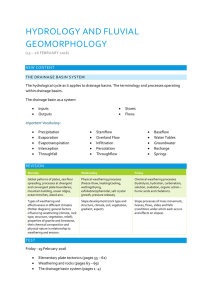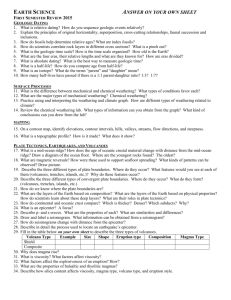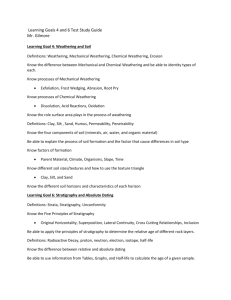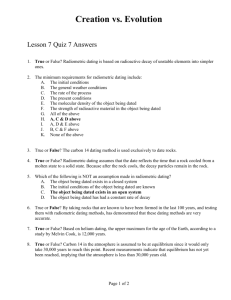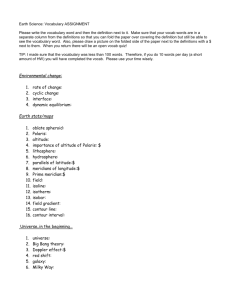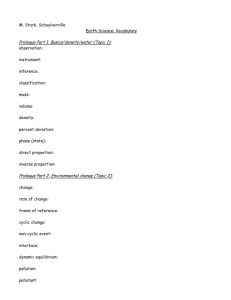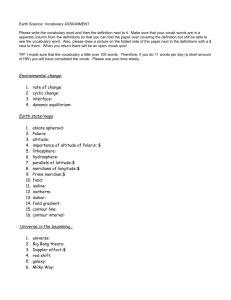Study Guide
advertisement
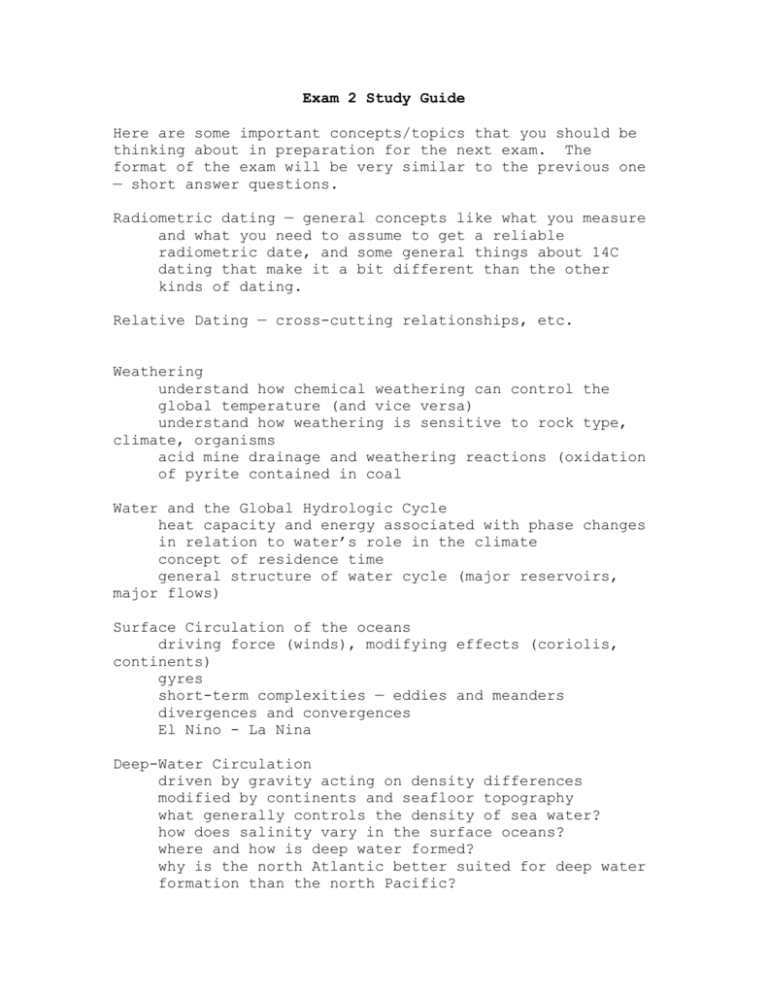
Exam 2 Study Guide Here are some important concepts/topics that you should be thinking about in preparation for the next exam. The format of the exam will be very similar to the previous one — short answer questions. Radiometric dating — general concepts like what you measure and what you need to assume to get a reliable radiometric date, and some general things about 14C dating that make it a bit different than the other kinds of dating. Relative Dating — cross-cutting relationships, etc. Weathering understand how chemical weathering can control the global temperature (and vice versa) understand how weathering is sensitive to rock type, climate, organisms acid mine drainage and weathering reactions (oxidation of pyrite contained in coal Water and the Global Hydrologic Cycle heat capacity and energy associated with phase changes in relation to water’s role in the climate concept of residence time general structure of water cycle (major reservoirs, major flows) Surface Circulation of the oceans driving force (winds), modifying effects (coriolis, continents) gyres short-term complexities — eddies and meanders divergences and convergences El Nino - La Nina Deep-Water Circulation driven by gravity acting on density differences modified by continents and seafloor topography what generally controls the density of sea water? how does salinity vary in the surface oceans? where and how is deep water formed? why is the north Atlantic better suited for deep water formation than the north Pacific? Streamflow drainage patterns, variation in gradient throughout a whole stream system hydrographs, floods, and urbanization Streams and responses to changes (natural and humanrelated) concept of 100-yr flood Groundwater (very little of this will be on the exam) porosity, permeability Darcy’s Law and rate of flow Cones of depression pollutants and paths of flow Soils what is soil, how is it formed, how long does it take to form soil, why should we care Earthquakes friction, fault slip, first-motion (beachballs), aftershocks damage — seismic wave amplification and liquefaction tsunamis — origin, behavior, speed


